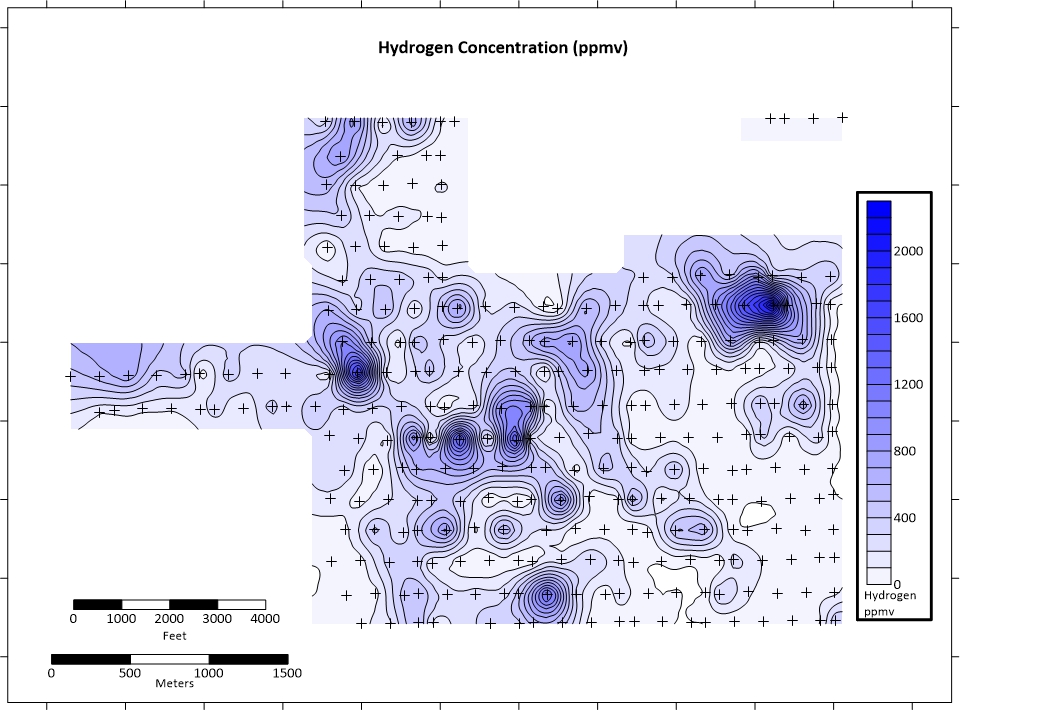Hydrogen as an energy source
Hydrogen is receiving special interest as an energy storage medium, and recently as a primary fuel for power generation and as a substitute for batteries to power vehicles.
An industrial hydrogen market already exists where the main uses for hydrogen are oil refining and ammonia production.
Primordial Source
The first elements in the Universe were hydrogen and helium
Hydrogen is 73% of Universe mass and only 0.55 ppm of Earth's atmosphere1
Most hydrogen on Earth is combined in water or hydrocarbons
Elemental Hydrogen Sources
Elemental hydrogen (H2) sources:
Volcanoes
Ultra-deep wells
Precambrian rocks
Crustal chemical reactions
Hydrogen exploration is in its infancy, and GeoFrontiers Corporation is at the forefront of development
Natural Progression into the Hydrogen Economy
Hydrogen market value was $129.9 billion in 2021 with growth of 6.4%/year2
Hydrogen Uses
Chemicals
Energy Storage
"Clean" Energy
Power Sources
-
Electricity
-
Transportation
Current Hydrogen Sources
Steam Methane Reforming
Electrolysis
Biomass Gasification
Soil gas in hydrogen exploration
Being a leading soil gas company, GeoFrontiers is interested in the idea of applying soil gas techniques to explore for natural hydrogen reservoirs. Encouragement comes from literature references reporting elevated hydrogen concentrations in soil gas over known or presumed hydrogen reservoirs.
The map below show one of GeoFrontiers' early surveys to determine hydrogen in soil gas. Samples were collected in Apache County, Arizona, USA, by a third party. GeoFrontiers’ laboratory supplied the sample containers and carried out the hydrogen sample analyses.
Mapped hydrogen concentration data showed more than 2000 ppmv (parts per million by volume) which equals 0.2% hydrogen by volume in soil gas. Several features and trends were apparent on the map. These preliminary data tell us the following:
Soil gas methods measured hydrogen concentrations significantly higher than atmospheric hydrogen concentrations of about 0.5 ppmv.
Hydrogen sources are in the area. Very mobile hydrogen vapor rapidly transports out of shallow soil and into the atmosphere. Continuous transpiration of hydrogen would deplete hydrogen in shallow soil without a subsurface source of hydrogen continously resupplying the lost hydrogen.
The next step for hydrogen exploration is to determine if subsurface reservoirs coincide with locations of these surface hydrogen features.
References:
1 Origin of the Elements, Lawrence Berkeley Laboratories, 2000, https://www2.lbl.gov/abc/wallchart/chapters/10/0.html, accessed July 2022
2 GrandViewResearch.com, https://www.grandviewresearch.com/press-release/global-hydrogen-generation-market, accessed July 2022




